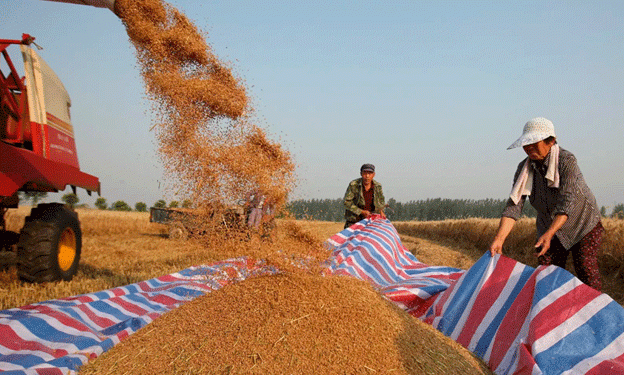The wheat market is witnessing fluctuations, with prices gradually rising as imports drop significantly. This comes at a time when the domestic wheat market has been facing pressure due to slower sales and logistical challenges, yet recent developments in wheat imports and government policies suggest a more favorable outlook for wheat producers in the coming months.
Wheat Market Trends: A Gradual Rise
In the recent months, wheat prices in China have been experiencing a steady rise. As of October 23, 2023, the price of wheat in major production regions like Shandong, Hebei, and Henan saw a slight increase, with prices ranging from 1.218 to 1.26 yuan per jin (approximately 0.5 kg). This marks an average price rise of 2.4% compared to September when the prices were lower. However, the price increase has been gradual, and many traders are facing challenges in adjusting to higher costs due to tight logistics and increased costs of transportation.
In northern regions, such as in Hebei, wheat prices have stabilized at about 1.232 yuan per jin, while Shandong is seeing prices hovering around 1.243 yuan per jin. Despite the price increases, wheat sales remain slow, particularly in the milling sector, where many enterprises report sluggish demand for flour. This has created a mixed market sentiment, with some traders holding off on sales due to lower inventory levels, while others are concerned about potential over-supply in the market as prices rise.
The Impact of Declining Wheat Imports
One of the major factors influencing the wheat market is a significant decline in wheat imports. According to the latest customs data, wheat imports have dropped by 60.1% in September 2023, with total imports for the year showing a smaller increase of 5.5% compared to 2022. This sharp decrease in imports is expected to reduce market pressure from foreign wheat supplies, thus allowing domestic wheat prices to strengthen. The reduction in imports is seen as a positive sign for local wheat producers, as it could help boost prices and ease competition with imported grains.
The government’s decision to limit wheat imports in the fourth quarter, along with policies supporting domestic production, is anticipated to provide stability to the wheat market. Additionally, the decision to cancel wheat auctions previously scheduled by China’s state-owned grain reserve (China National Grain and Oils Group Corporation) further signals strong support for domestic wheat prices.
Government Support for Wheat Producers
To further bolster the wheat market, the Chinese government has increased the minimum purchase price for wheat to 1.19 yuan per jin for the 2024/25 harvest season. This move is aimed at stabilizing the market and incentivizing farmers to continue wheat cultivation despite ongoing market fluctuations. The government’s policy is designed to ensure that wheat production remains economically viable for farmers, even in the face of rising input costs and shifting market conditions.
As the weather cools and the frost season approaches, demand for wheat products such as flour is expected to increase, which could improve market conditions further. The government’s support, along with the reduction in imports, sets the stage for a more favorable environment for wheat growers, despite the challenges that remain.
A Mixed but Positive Outlook for Wheat Prices
While the wheat market continues to experience a mix of upward price movements and sluggish demand, the significant drop in wheat imports and government interventions provide hope for a more stable and profitable market. Wheat farmers can expect gradual price increases, although concerns over supply pressures and slow consumption may limit rapid price gains. With policies in place to support domestic production, the wheat market in China is likely to stabilize and improve over the coming months.
Error




